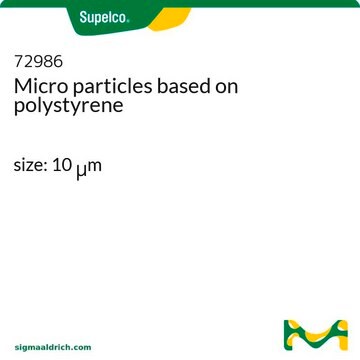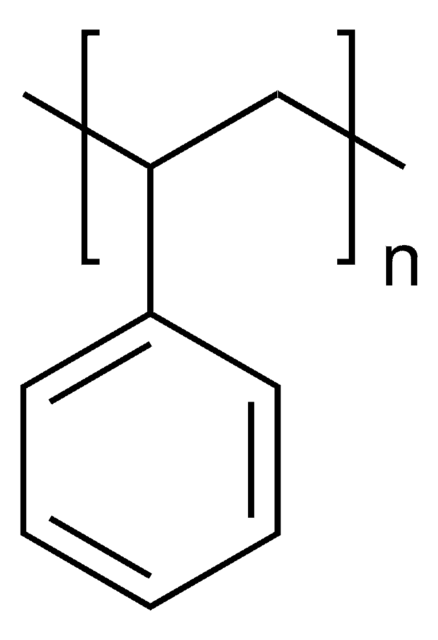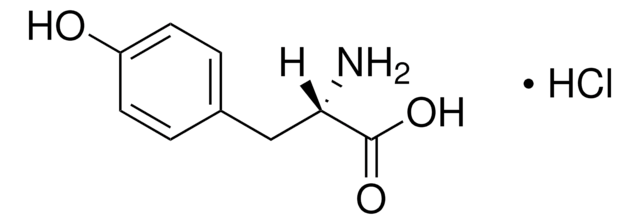93829
L-Tirosina
≥99.0% (NT), suitable for ligand binding assays, BioUltra
Sinónimos:
3-(4-Hidroxifenil)-L-alanina, Ácido (S)-2-Amino-3-(4-hidroxifenil)propiónico
About This Item
Productos recomendados
product name
L-Tirosina, BioUltra, ≥99.0% (NT)
product line
BioUltra
assay
≥99.0% (NT)
form
powder or crystals
optical activity
[α]20/D −11.5±1.0°, c = 4% in 1 M HCl
technique(s)
ligand binding assay: suitable
impurities
insoluble matter, passes filter test
≤0.5% foreign amino acids
ign. residue
≤0.1%
loss
≤0.2% loss on drying, 20 °C (HV)
color
white
mp
>300 °C (dec.) (lit.)
solubility
1 M HCl: 25 mg/mL, clear, colorless (hot)
anion traces
chloride (Cl-): ≤400 mg/kg
sulfate (SO42-): ≤300 mg/kg
cation traces
Al: ≤5 mg/kg
As: ≤0.1 mg/kg
Ba: ≤5 mg/kg
Bi: ≤5 mg/kg
Ca: ≤10 mg/kg
Cd: ≤5 mg/kg
Co: ≤5 mg/kg
Cr: ≤5 mg/kg
Cu: ≤5 mg/kg
Fe: ≤5 mg/kg
K: ≤50 mg/kg
Li: ≤5 mg/kg
Mg: ≤5 mg/kg
Mn: ≤5 mg/kg
Mo: ≤5 mg/kg
NH4+: ≤200 mg/kg
Na: ≤200 mg/kg
Ni: ≤5 mg/kg
Pb: ≤5 mg/kg
Sr: ≤5 mg/kg
Zn: ≤5 mg/kg
absorption
cut-off at 310 nm in 1 M HCl at 0.5 M
SMILES string
N[C@@H](Cc1ccc(O)cc1)C(O)=O
InChI
1S/C9H11NO3/c10-8(9(12)13)5-6-1-3-7(11)4-2-6/h1-4,8,11H,5,10H2,(H,12,13)/t8-/m0/s1
InChI key
OUYCCCASQSFEME-QMMMGPOBSA-N
¿Está buscando productos similares? Visita Guía de comparación de productos
Application
Other Notes
Storage Class
11 - Combustible Solids
wgk_germany
WGK 1
flash_point_f
Not applicable
flash_point_c
Not applicable
ppe
dust mask type N95 (US), Eyeshields, Gloves
Certificados de análisis (COA)
Busque Certificados de análisis (COA) introduciendo el número de lote del producto. Los números de lote se encuentran en la etiqueta del producto después de las palabras «Lot» o «Batch»
¿Ya tiene este producto?
Encuentre la documentación para los productos que ha comprado recientemente en la Biblioteca de documentos.
Los clientes también vieron
Artículos
Inborn errors of metabolism are caused by changes in specific enzymatic reactions and hundreds of different such alterations, which affect about 1 of every 5000 newborns, have been characterized.
Nuestro equipo de científicos tiene experiencia en todas las áreas de investigación: Ciencias de la vida, Ciencia de los materiales, Síntesis química, Cromatografía, Analítica y muchas otras.
Póngase en contacto con el Servicio técnico








